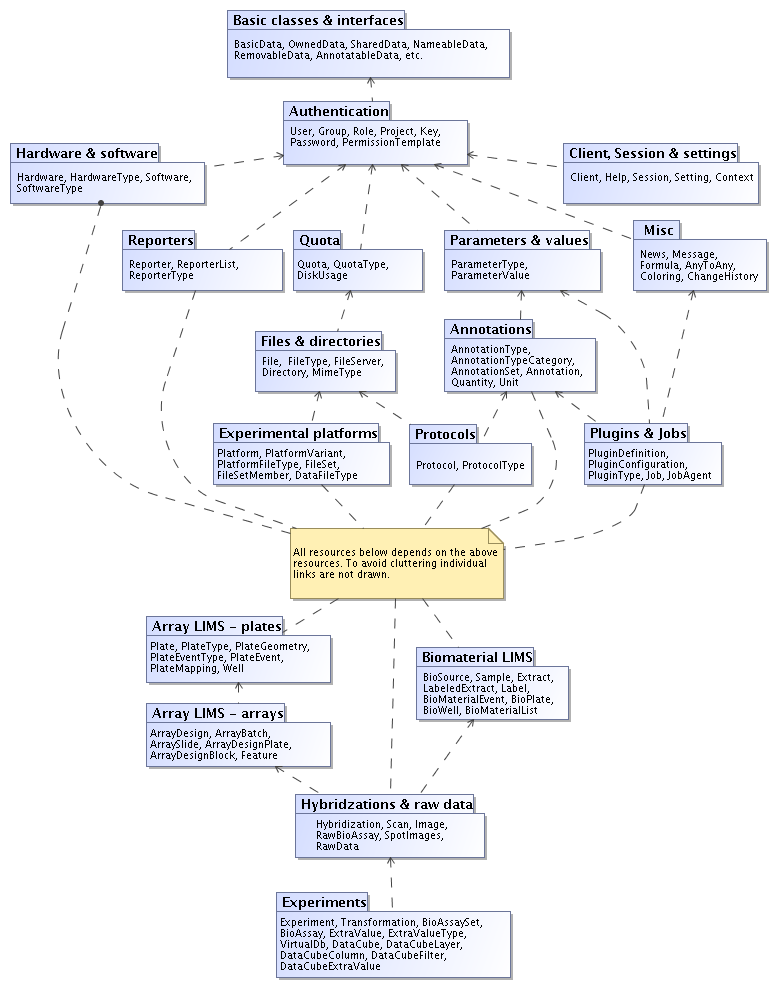- 29.2.1. Basic classes and interfaces
- 29.2.2. User authentication and access control
- 29.2.3. Hardware and software
- 29.2.4. Reporters
- 29.2.5. Quota and disk usage
- 29.2.6. Client, session and settings
- 29.2.7. Files and directories
- 29.2.8. Experimental platforms
- 29.2.9. Parameters
- 29.2.10. Annotations
- 29.2.11. Protocols
- 29.2.12. Plug-ins, jobs and job agents
- 29.2.13. Biomaterial LIMS
- 29.2.14. Array LIMS - plates
- 29.2.15. Array LIMS - arrays
- 29.2.16. Hybridizations and raw data
- 29.2.17. Experiments and analysis
- 29.2.18. Other classes
This section gives an overview of the entire data layer API. The figure below show how different modules relate to each other.
